The 6 Richest Community & Family Things I Loved About Becoming Amish
Today’s guest post is by Bill Moser and Jeff Smith. Those names might ring a bell – you might recall a post here last year on the book Becoming Amish, about the Moser family’s conversion to Amish Christianity.
In this first of two guest posts, Bill and Jeff share one side of the experience with us today.
—
Seeking a community of faith that aligned with their own interpretation of Jesus’s teachings, Bill and Tricia Moser left a striver life in one of America’s wealthiest communities, Grosse Pointe, Michigan, to join the horse-and-buggy Amish. They lived that life for 15 years, eventually transitioning to an Amish-Mennonite church, which they remain a part of today.
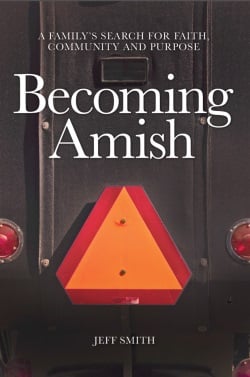 We asked Bill to reflect upon on the five richest aspects of living the Amish life and on the five most challenging aspects of living an Amish life.
We asked Bill to reflect upon on the five richest aspects of living the Amish life and on the five most challenging aspects of living an Amish life.
In this first article, Bill discusses the family and community richness of his Amish years—and he gave us six things, not just five!
1. A deep and strong sense of closeness with family and community.
It’s difficult to express this in a way that really conveys the importance and power of it, without it sounding like a quaint little thing, but that sense of belonging and the sense of community are what first come to mind. Having that close community adds a layer of insulation that allows you to focus that much more on your own family.
The environment fosters such a rich experience of community, of relating to your brothers and sisters in your church; and being able to raise a family in that environment, it just creates a closeness at a very deep level. It was very helpful to us as a family to have that support.
2. Working with people of the community.
Because you are caring for your community every day, and caring for your brothers and sisters, the work experience was more than just “work.” The community ties made work a much more relational experience.
For example, a friend of ours and his sons worked in our pallet shop, and just seeing him in the shop five days a week and interacting with him and his sons, well, you really get to know people. I was very conscious of that difference between the Amish work relationship and the way that can be in general society.
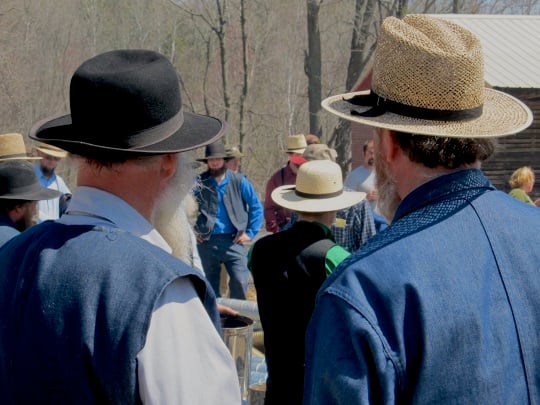
Also, I found that because the community and your relationships are what are important, the fact that the work can be mundane seems to be of much less importance. Making pallets is a repetitive, mundane job, and I had been an architect. But the pallet work was positioned in the context of my community. My friends were working in the shop. My house was right next door. I could see my Amish neighbor working across the street. I knew everybody who drove by in a buggy. People knew when we took break at the pallet shop, so they’d stop in and have a cup of coffee. And all of that put the mundane nature of the work in an entirely different context.
If our ambition is to strive to be at the top of a career or a “fulfilling job,” that can be pretty lonely. If the focus is succeeding at all costs, it is easy to lose sight of what we need as humans, the social contact, to be appreciated and wanted and needed and to give and to serve and to help others.
3. Not just a church and not just a community, it’s a church community.
This is a really key point. The Amish community is not just a church and it’s not just a community. It’s a community of faith. One of the greatest things we sought was to interact with the people in our church in a seven-days-a-week kind of way, not just on Sundays and in weekly bible classes. The sense of richness and relational closeness that grew from interacting in that moment-by-moment way is remarkable, and I will never forget it.

4. Family togetherness.
Having work being integrated into your daily family life—what better way to maintain contact with your family, and have the opportunity to know your children, where they are at as they grow, sensing if they are struggling. It is a tremendous opportunity to have time with your children and to be aware of each other, being there for all the moments as they grow.
5. Being husband and wife.
Just being able to be around one another more throughout the day, throughout the week, added to the richness of our relationship, instead of being off somewhere else most of the hours of the day.
6. Life moments.
There were so many rich life moments, moments of community and family. So, here is just a kind of postcard from that time, just a brief memory that touches upon what I mean. On the one hand, there’s nothing big or momentous about this memory, but on the other hand it conveys some of the most important things of life.
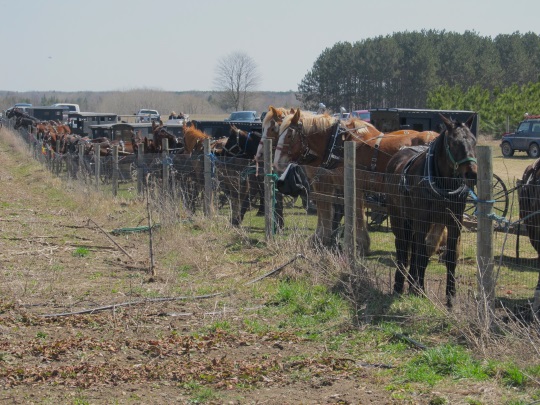
We were gathering sap to make maple syrup—my wife and family and another family from our community, so there were several children, some younger and some older. And we were all out in the forest, and the taps were all in the trees, with buckets hanging from them. We were all on a horse-drawn wagon and we would stop at a place in the forest and all the children would take empty buckets and go a tap and pour the sap into their bucket and eventually come back with a bucket full of sap and pour the sap into the big gathering tank.
It was evening, getting on toward twilight. It was the end of winter, and though there was snow, there was that hint of warmth in the air, and the way the light lingered, it conveyed the promise of spring. The moment had such a sense of peacefulness and serenity and felt like such a beautiful expression of creation … that would definitely be the kind of moment I think of when I think of our years in the Amish life.
Bill Moser and Jeff Smith recently collaborated on a book titled Becoming Amish, about the Moser family journey. The book provides broader context to transitioning to Amish with interviews of Amish bishops to discuss the seeker experience, an interview with the minister who helped lead the Amish education Supreme Court case of 1972, exploration of the seminal Anabaptist book Martyr’s Mirror and visits to plain living communities to discuss technology and faith. Find the book and more at BecomingAmish.net or Amazon.com.
Photos courtesy of Dance Hall Press/Jeff Smith.





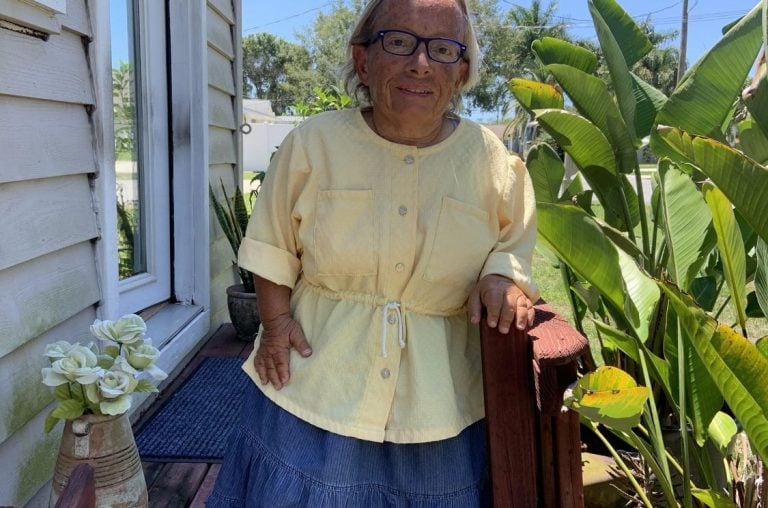
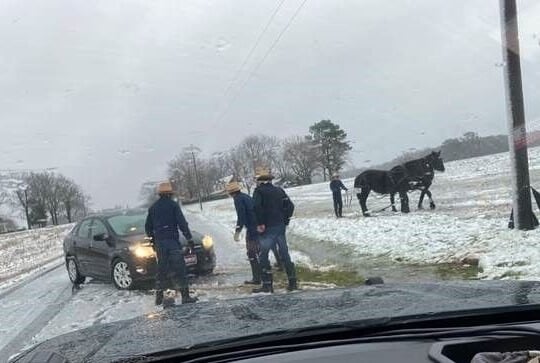

thinking about becoming a "driver"
Wondering if there are any folks out there that would be willing to share with us the tried and true, “do’s and “don’ts that come about as taking on the job of driving for the Amish.
We’re considering this venture but want to do some research first.
Thank you,
Amish taxi job research
Hi Elaine, wise of you to do some research, from all I’ve heard it can be a nice and rewarding job, but always good to have as complete a picture as possible.
We have done several posts here on driving for the Amish – you might find some insights in the comments section there, or there may be someone there you can ask directly as well. Both of these comment threads have commenters who drive for the Amish or know those who do:
https://amishamerica.com/debbie-the-amish-taxi-driver/
https://amishamerica.com/forty-years-of-driving-the-amish-in-lancaster-county/
driving for the Amish
I drove for the Old Order Community in Unity, ME from 2009 to 2016 when I moved away from the area. I miss them very much. The lessons I learned from them are patience and respect. The patience is for all the added stops once you get to town, and they think of other stores they need to stop at while they are in town. I learned to be much more mindful of my language, to not have the radio on unless they didn’t mind some Christian music. Most of the time, they preferred silence. I only charged for gas, not my time, because I enjoyed driving for them. You also need to decide if you only want to drive locally or multi day trips out of state. If you are doing this as a business, I would encourage you to talk to other drivers in the area for what is a fair rate
Why did they leave?
This is an interesting article, however, one is left to wonder why they finally left the old order and joined the more liberal Amish-Mennonites. That part of their journey would also be interesting to many of us, I am sure. It seems very few converts are able to “stick it out”. Why?
There are as many answers to your question as there are those that tried and did not stay.
I have personally been told of or read about these reasons: Joined the wrong group, family believed that they were spiritually starving, problems with the church over someone of the opposite gender, spiritual instability, spiritual differences, had other problems that the Amish could not help, language.
I am sure that there are others, maybe many others.
I also know some that came from the outside that are still there. One was a Budget scribe, a couple joined that had previously posted here on Amish America, a young woman that posted here is also still Amish to the best of my knowledge.
I am one of those that failed to stay, however, I cannot stay away from my Amish friends and community, and have come very close to returning permanently several times. It is hard to be there and just as hard to be not there, for many reasons.
Why the Mosers chose to leave Old Order Amish
Based on conversations I have had with Amish, I’d say Lincoln did a fine job of responding to the question of why people chose to leave the Amish—each individual, each family, would have their own mix of reasons. One conversation that stayed with me from my interviews for the book Becoming Amish happened with a very respected Amish bishop. He explained that the same personality trait that enables a person to break away from general society to join the Amish—a sense of rebellion—is the same trait that makes it difficult to remain Amish. A funny anecdote related to this point: My son was living in Manhattan and was walking, carrying the Becoming Amish book, heading into a building. And just as he was at the door, a huge biker gang looking guy was going in the door at the same time, and the biker stopped at the door, pointed to the title of the book, smiled and said, “Nice. Going against the grain!”
Interesting point from the bishop and great anecdote Jeff – that’s a funny image! I guess he thought he was seeing a kindred spirit of sorts.
Driving for the Amish
My uncle drove for the Amish in Michigan. I’m wondering about driving for the Amish in Pinecraft. There’s a big chance we’ll be relocating there for my health and though I’m disabled now, I’m hoping I’ll get better. That might be a good job for me and a friend of mine who will be possibly relocating with me and my family. Thanks for the information. I, too, wonder at why people leave the Amish. It seems that there are many different types of Amish sects. Why leave completely when it’s possible to relocate to a sect that might be more “palatable”? Then again, our independent natures may be the ultimate reason why those things we don’t like override the things that do. I’m hoping to content myself with just living near them.
I asked my son, Mark, if he knew the Mosers. He said that he did indeed and had stayed the night with them when they were Amish and lived in Marion, MI. He is sorry that they were not able to stay Amish but understands especially as they were never able to overcome the language barrier.